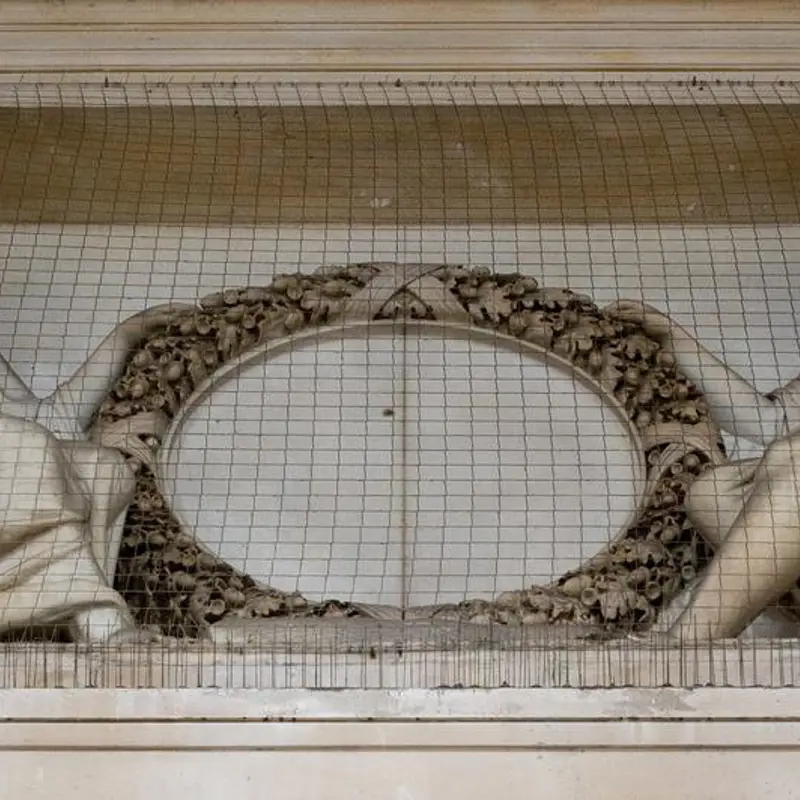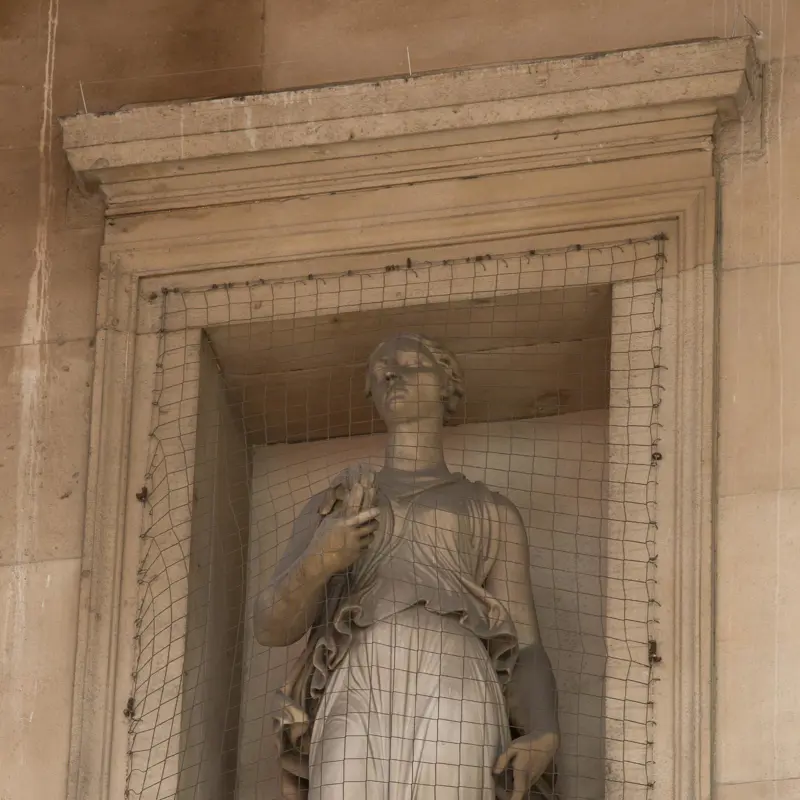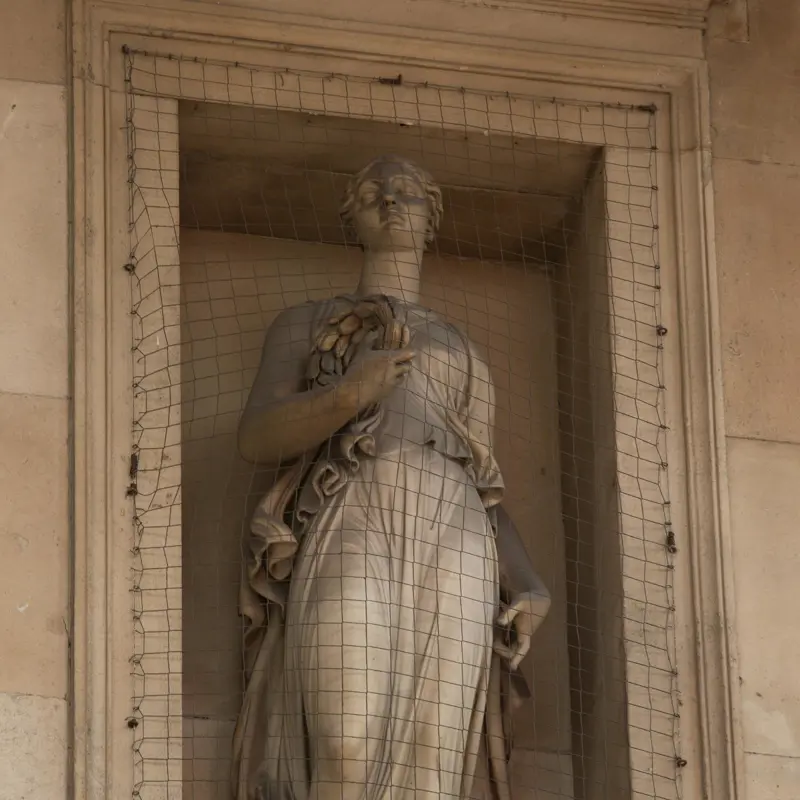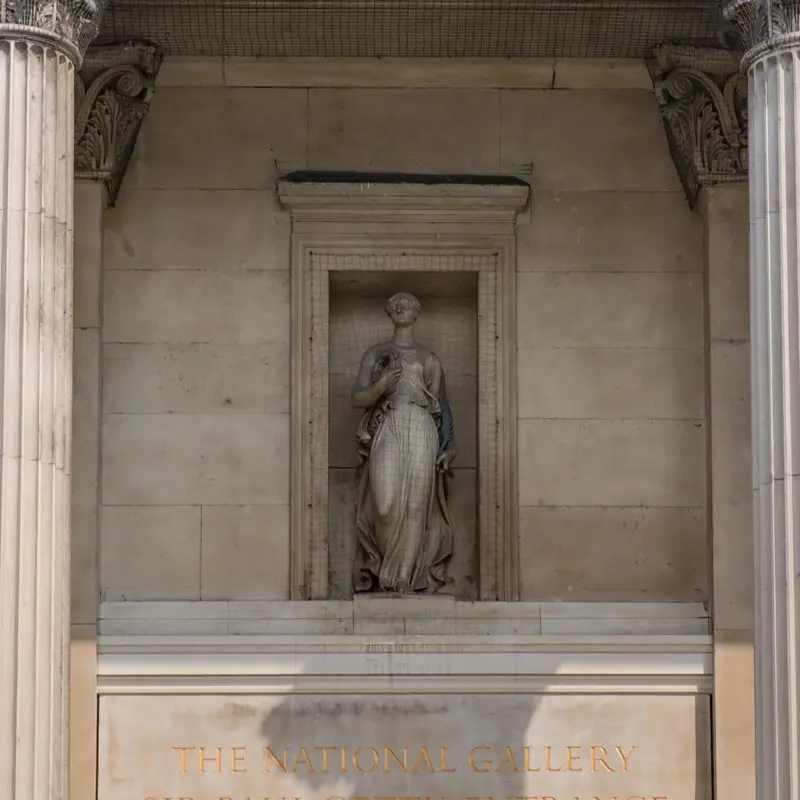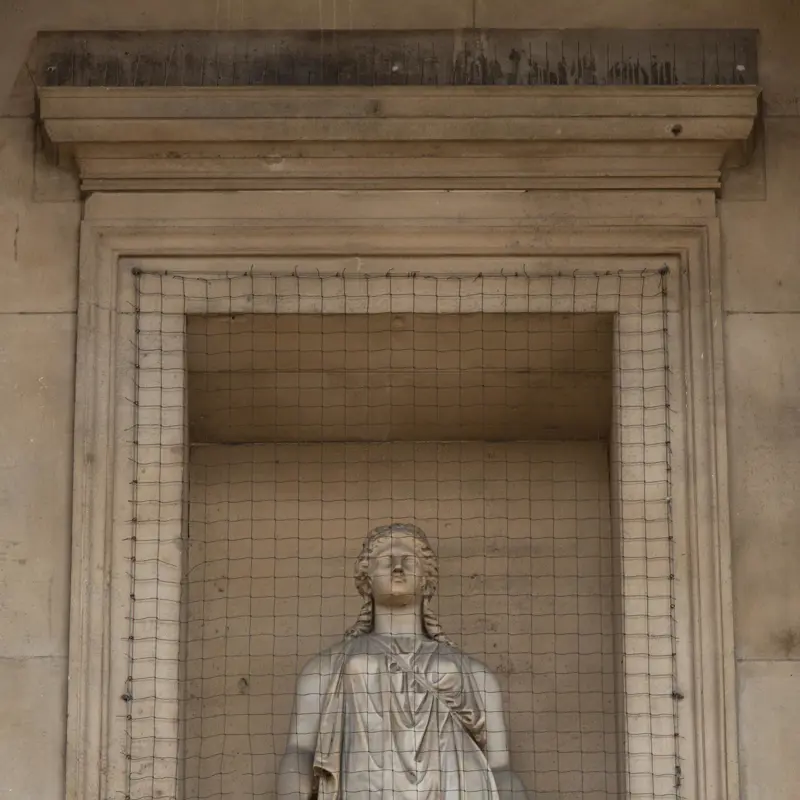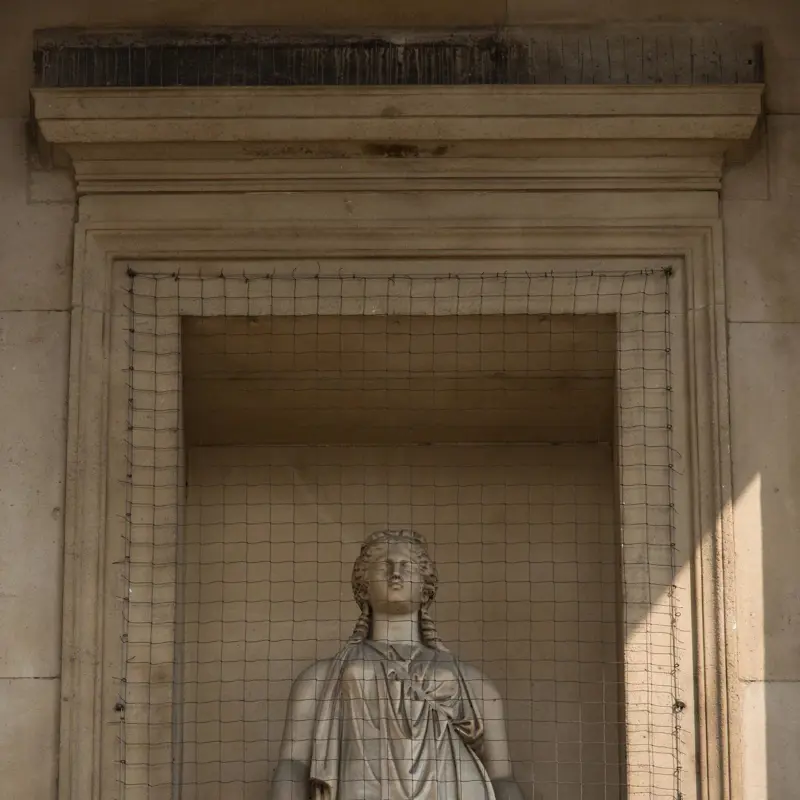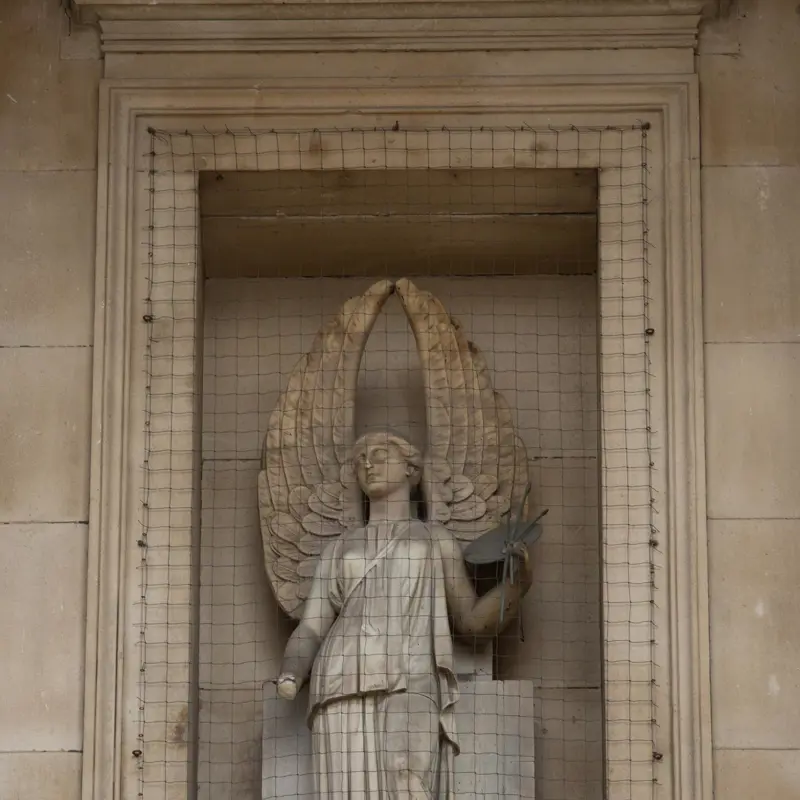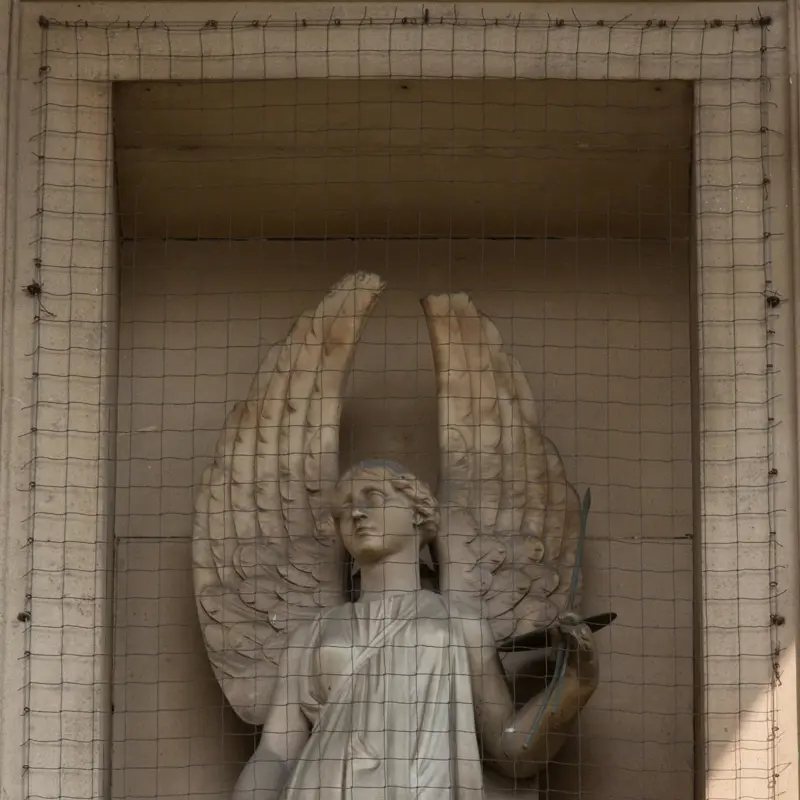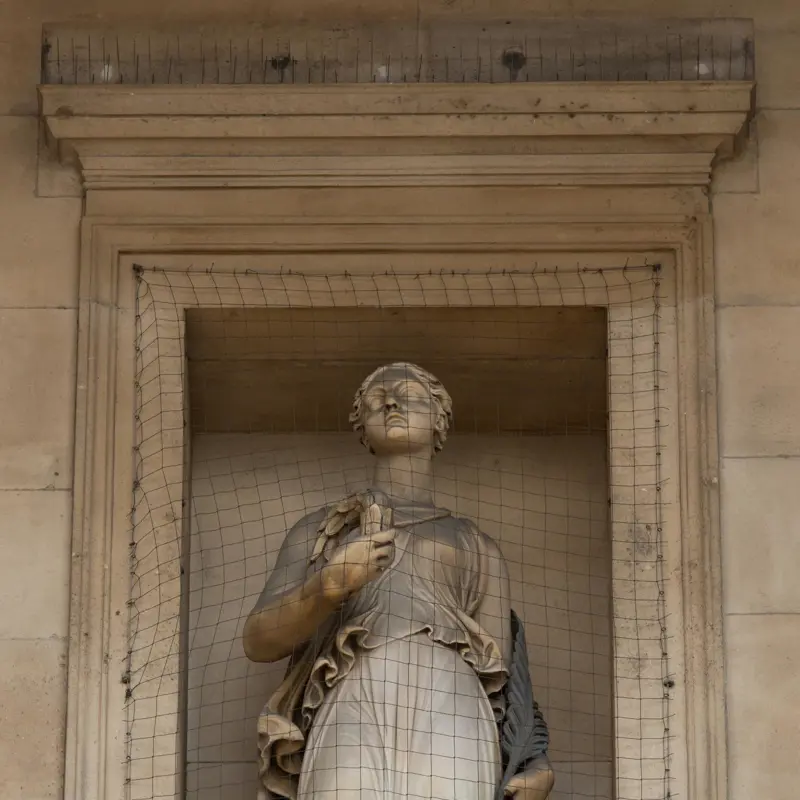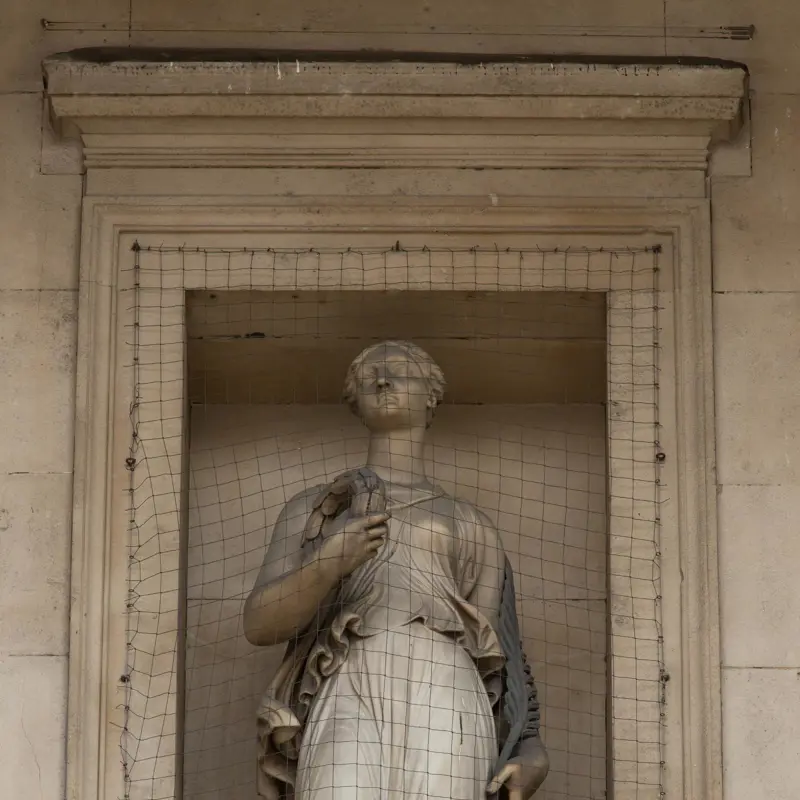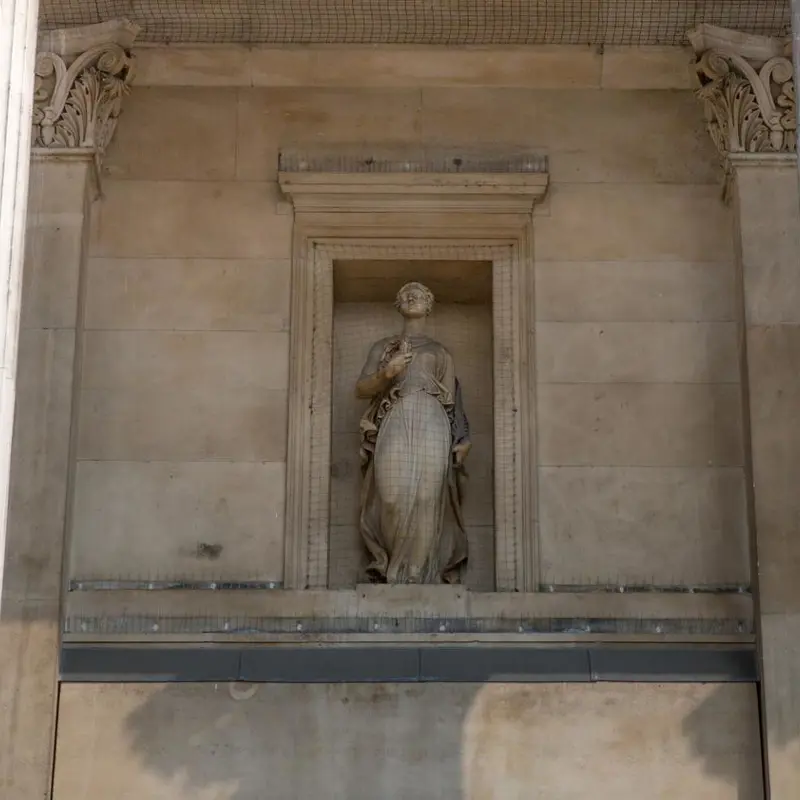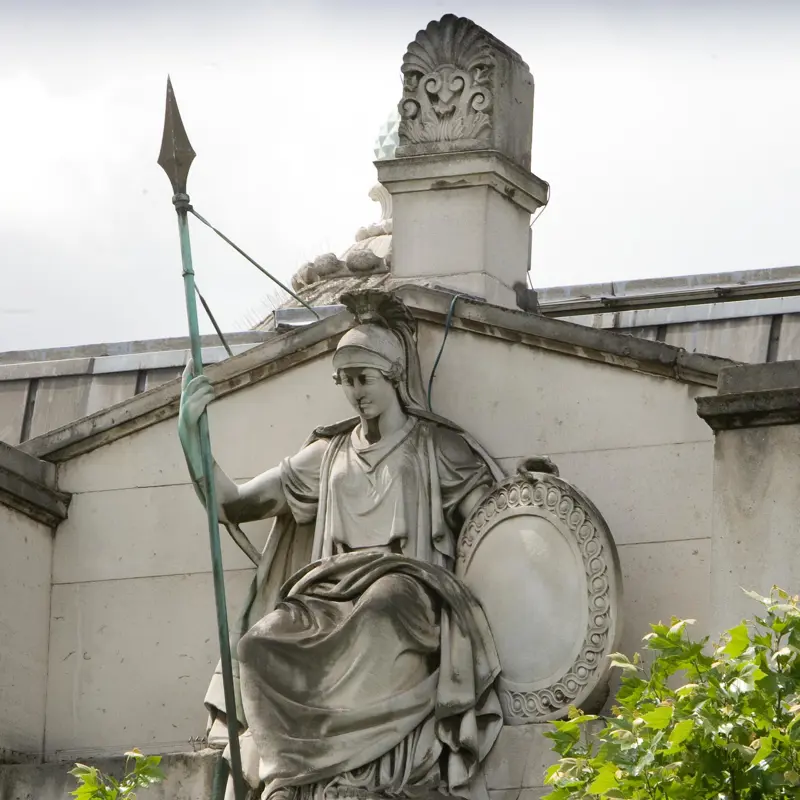Probably by Edward Hodges Baily, 'Victory', 1826-32
About the work
Overview
This Victory is the work of the British neoclassical sculptor, Edward Hodges Baily, as are its pair and another six female figures, which all adorn the façade of the National Gallery.
In 1826, Baily received a large order for sculpture, including four statues of ‘Victories’, for Marble Arch, which was to be erected in celebration of Britain’s defeat of the French in the Napoleonic Wars. Although Baily completed his commission, not all of his work was used as originally intended; some parts ended up adorning other government buildings. During the construction of the National Gallery, its architect, William Wilkins, was forced, in a cost-cutting exercise, to recycle masonry and statuary from other projects. This explains the presence above the Gallery’s central portico of this statue personifying Victory and its pair, either side of Charles Rossi’s relief depicting Asia and Europe, even though all three pieces were initially created for the Marble Arch commission.
Key facts
Details
- Full title
- Victory
- Artist
- Probably by Edward Hodges Baily
- Artist dates
- 1788 - 1867
- Part of the group
- Central Portico Sculptures
- Date made
- 1826-32
- Medium and support
- Portland stone
- Acquisition credit
- Commissioned by the Office of Works for the Marble Arch, and installed on the Gallery by 1838
- Inventory number
- H209
- Location
- Gallery Exterior: Central Portico
- Collection
- Contextual Collection
About this record
If you know more about this work or have spotted an error, please contact us. Please note that exhibition histories are listed from 2009 onwards. Bibliographies may not be complete; more comprehensive information is available in the National Gallery Library.
Images
About the group: Central Portico Sculptures
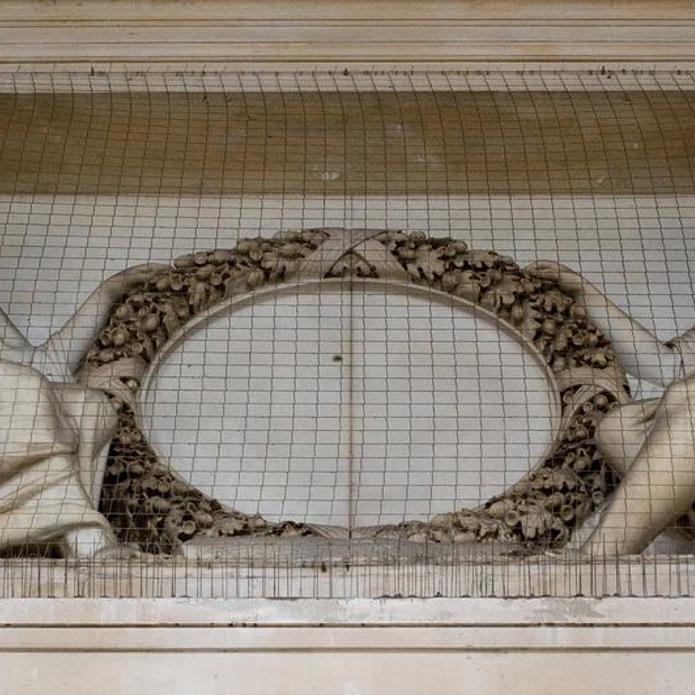
Overview
The dominant sculptural ornament of the National Gallery’s central portico is a relief over its entrance, representing Europe and Asia. The continents are personified by two women, one of whom sits on a horse, the other on a camel. They are flanked by a pair of winged female draped figures, standing in niches either side of the entrance. None of these sculptures were originally intended for this setting.
The central sculpture was designed by John Nash in 1827, and carved by Charles Rossi. It was supposed to adorn London’s ceremonial entranceway, the Marble Arch, but was never put up when the arch was reduced in scale and ambition to save money. When it was discovered that the government was not willing to pay for elaborate external decorations on William Wilkins’ new National Gallery, it was decided to rehouse Europe and Asia on Trafalgar Square. The two female figures, sculpted by another British neoclassical sculptor, Edward Hodges Baily, were also originally designed by Nash for the Marble Arch.

